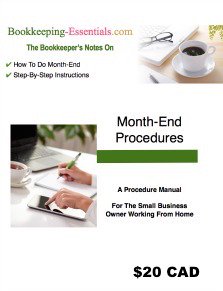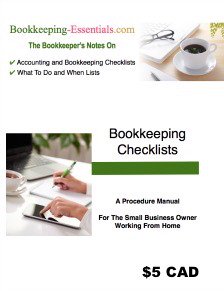Payroll Liability Refund
by Stephen
(Ontario)
Hi,
Our church uses Quickbooks Pro for accounting but we don't use the payroll module (only 1 paid employee). We record our payroll using manual entries (record a cheque against expense accounts and payroll withholding liability accounts.
We recently received a credit from the government for overpayment from the previous year, which we are using to offset the monthly remittance.
I need to know how to record the credit we recieved into Quickbooks. Here are the accounts I have setup for payroll:
Salary (Expense Account)
Church Portion of CPP (Expense Account)
Church Portion of EI (Expense Account)
Employee Portion of CPP (Liability Account)
Employee Portion of EI (Liability Account)
Payroll Taxes (Liability Account)
When I record payroll, here are the entries:
Pastor Salary $1000 (Gross Salary Amount)
Payroll Taxes $-120
Employee Portion of CPP $-58
Employee Portion of EI $-32
Cheque $ = Net Salary of $790
When I record monthly remittance to government, here are the entries:
Church Portion of CPP $58
Church Portion of EI $48
Employee Portion of CPP $58
Employee Portion of EI $32
Payroll Taxes $120
Cheque $ = $316
Since the credit ($766) is for overall overpayment, not specifically against taxes or cpp or whatever, I'm not sure how to record this entry.
Additionally, since our monthly remittance is less than the credit amount, I can only use a portion of the credit each month, so I would need to be able to record this as well.
Any ideas/suggestions?

Hi Stephen,
I am going to assume you received your payroll liability credit because you had a PIER performed by CRA. Your PIER report should give you the breakdown of the credit.
If you don't have the PIER report, speak with CRA. You want to figure out what you have been calculating incorrectly so you don't repeat the mistake again this year.
I can't see from your entries above where you booked your salary payable or the employer's portion of CPP and EI. This is the entry I use when I book payroll manually; ignoring any employee benefits and vacation pay:
Debit (Increase) Salary expense for Gross wages (expense account on the income statement)
Debit (Increase) Payroll tax expense for Employer portion of CPP and EI if applicable (expense account on the income statement)
Credit (Increase) Salary payable for Gross wages less the employee portion of CPP, EI, and income tax ie Net pay (current liability on balance sheet)
Credit (Increase) Payroll tax payable for Total of employer and employee deductions (current liability on balance sheet) ... employee benefits or vacation pay are not recorded to this account, only CRA source deductions reported on the PD7A
You can see I don't break out the source deductions into separate accounts. I just refer to it as payroll tax expense and payroll tax payable ... grouping like transactions into one account just like you would "utilities" for example.
Then when I pay the employee, I would make this payroll bookkeeping entry:
Debit (Decrease) Salary payable for Net pay (current liability on balance sheet)
Credit (Decrease) Cash in Bank for Net pay (current asset on balance sheet)
When I pay the Receiver General, I would make this payroll liability bookkeeping entry:
Debit (Decrease) Payroll tax payable for Total of employer and employee deductions (current liability on balance sheet)
Credit (Decrease) Cash in Bank for Total of employer and employee deductions (current asset on balance sheet)
You have to record your payroll liability credit on your books. Even though the credit pertains to the prior year, as your payroll is small and has only one employee I would make the following entry:
Debit (Decrease) Payroll tax payable for the amount of the Payroll liability refund (current liability on balance sheet)
Credit (Decrease) Payroll tax expense for the amount of the Payroll liability refund (expense account on the income statement)
Make a good memo note including the year the entry pertains to.
You can see with my Chart of Accounts, that you don't actually need to see the breakdown of the credit. All of the credit will pertain to the employer portions. Any overpayment for the employee is returned to the employee when they file their personal tax return.
I would also make a note on your list of unusual entries that you give to / discuss with your accountant at year-end.
Normally a prior year adjustment would be booked to retained earnings ... but only the accountant should make this type of entry ... and your credit is not a material amount.
Your list of unusual entries will bring the transaction to his/her attention. If your accountant wants to handle the transaction differently, (s)he will make an adjusting entry.
Once you have made this entry, on your next payroll, you will book the first two entries for your payroll excluding the third entry for payroll liability. You will still file your PD7A report though.
On the month where you have to begin paying payroll taxes again as you have used up your credit, your payroll liability entry would be:
Debit (Decrease) Payroll tax payable for Total of employer and employee deductions less any payroll liability credit (current liability on balance sheet)
Credit (Decrease) Cash in Bank for Total of employer and employee deductions less any payroll liability credit (current asset on balance sheet)
I hope this helps Stephen ... but I would definitely bring the entries to your accountant's attention when you submit your year-end work.
Comments for Payroll Liability Refund
|
||
|
||
|
||
|
||
Enjoy A Tea Break With
Me Today. Let's Chat!
Use the search feature to quickly find the
information you're looking for.
Join Me On Facebook
Help support this site by "liking" me! Here's where I post current information.
Listed Under Websites NOT Local Business.
This website is NOT associated with the business operating in Bonnyville AB.



